SRNL’s ASET an Asset to the Nonproliferation Stewardship Program
“The support across the Athena team and laboratory partners has been collaborative…” – Samuel Uba, SRNL Scientist
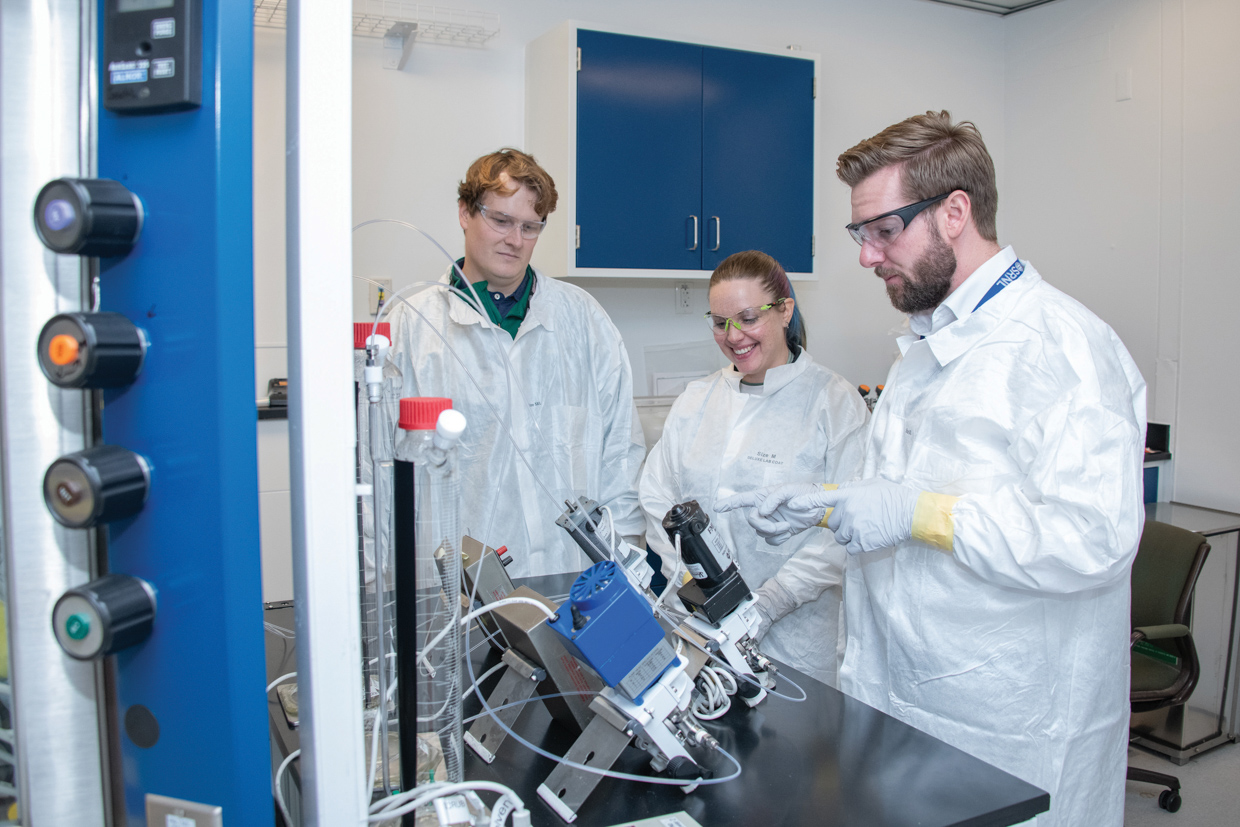
Matt Mills, Rebecca Carter, Drew Fairchild work with centrifuges as part of the Athena program.
photo: Savannah River Site Photography
The Actinide Science and Engineering Testbed (ASET) at Savannah River National Laboratory (SRNL) plays a key role in the Department of Energy (DOE), National Nuclear Security Administration (NNSA) Nonproliferation Stewardship Program (NSP), as part of the Athena plutonium program. The NSP seeks to ensure foundational technical competencies at DOE/NNSA are sustained and available to support the nation’s nonproliferation missions. To do this NSP is investing in:
- Enabling Infrastructure
- Enabling Science and Technology
- Expert Workforce
Enabling Infrastructure and Science and Technology
ASET, the nation’s engineering-scale nuclear materials processing capability, includes knowledgeable staff with the tools necessary to support the nation’s plutonium separations Science and Technology (S&T) needs. The capability is housed within an adaptable nuclear facility with shielded cells, laboratory spaces and analytical capabilities. This infrastructure will enable long-term innovative nuclear energy and materials use through S&T advancements in support of industry use as well as developments to improve the ability to safeguard material and reduce proliferation concerns.
“SRNL offers unique capabilities to assist the DOE and NNSA in meeting its Nonproliferation Stewardship Program objectives of ensuring foundational competencies and capabilities to meet future mission needs,” says Matt Griffin, Nonproliferation Stewardship Program Manager at SRNL. “Having a knowledgeable workforce with the appropriate tools is critical to successfully enable the benefits of nuclear technologies.”
SRNL’s ASET provides engineering-scale processing that offers opportunities to gain information that is currently unavailable from past large-scale production facilities or from current lab-scale operations. Information from ASET will enable better utilization of nuclear material for medical, energy and industrial applications. Because of SRNL’s location on the Savannah River Site, SRNL’s unique capabilities include:
- Staffing expertise that supported Savannah River Site H- and F-Canyon operations for past several decades
- Access to spent nuclear fuel (SNF) at Savannah River Site L-Reactor basin including shipping casks, fuel handling, and other SNF special-handling infrastructure
- Existing SRNL infrastructure (hot cells, intermediate level cells, glove boxes, specialized equipment) with the unique capability to manipulate substantial amounts of material
- Specialized instrumentation to analyze chemical forms and radioisotopes
- Expertise gained from the NA-ESH-10 sponsored MK18A Target Recovery Program; processing Pu targets to recover Pu-244
ASET is renewing, reviving, and restoring facilities and experts in nuclear materials separations, plutonium production sciences, and the nuclear nonproliferation topics associated with these areas. Along with modernizing infrastructure, “development of the next generation workforce and transferring knowledge from the current experts are at the center of all activities within the Athena program,” said Harris Eldridge, Senior Engineer and an Athena Lead.
Maintaining these experts and the tools that are required to understand nuclear materials will ensure confidence in the deployment of future nuclear technologies, as well as the knowledge to secure and safeguard such technologies.
Expert Workforce
Maintaining an expert workforce will enable U.S. technical leadership in disposing used nuclear fuel and in the recovery of valuable nuclear material. The program has hired many new people to support these endeavors. Samuel Uba, a recently hired scientist at SRNL, has engaged with NSP Athena initiatives to increase plutonium monitoring and material characterization capabilities.
“My experience since joining SRNL has been positive, motivating and exciting,” says Uba. As part of the Online Monitoring team for Athena, Uba is involved in the static and real-time characterization of the chemical process flow, utilizing an optical spectroscopy technique for real-time quantification. He’s also involved in other nuclear nonproliferation-related projects providing technical support as a spectroscopist and materials scientist. “These work experiences have improved my knowledge in nuclear nonproliferation technologies,” says Uba. “The support across the Athena team and laboratory partners has been collaborative, from team members, project managers and laboratory leadership.”
Uba is experiencing first-hand the impact NSP is having on building and sustaining nonproliferation competences and capabilities. Updating infrastructure and executing relevant science and technology will help attract and retain new talent.
The goal of the Athena initiative is to onboard 75 early and mid-career scientists and engineers to become experts in stewarding key plutonium processing competencies, 25 people alone with SRNL’s ASET. Early career scientists and engineers are joining the project and providing meaningful contributions. Significant knowledge transfer is happening amongst staff working in tandem with laboratory fellows and experts. These activities collectively augment processes and bolster resources amongst the program teams and its partner labs.
The ASET Mission
- Equipping the DOE complex to allow for engineering-scale, nuclear material processing relevant to nonproliferation and civilian uses of nuclear materials;
- Developing subject-matter experts able to effectively learn, be informed by, and innovatively experiment with U.S. and international processing activities, and;
- Integrating a multi-disciplinary science and technology agenda engaging a diverse workforce across the DOE complex to develop baseline skills that evolve and grow into a variety of nonproliferation missions
NSP:
NNSA Nonproliferation Stewardship Program
Athena:
Collaborative NSP plutonium stewardship program led by Pacific Northwest National Laboratory (PNNL), Idaho National Laboratory (INL), Argonne National Laboratory (ANL), and Savannah River National Laboratory (SRNL)
ASET:
SRNL’s Actinide Science and Engineering Testbed positioned to provide engineering-scale processing capabilities to enable nuclear technologies
ASET Infrastructure and Capabilities
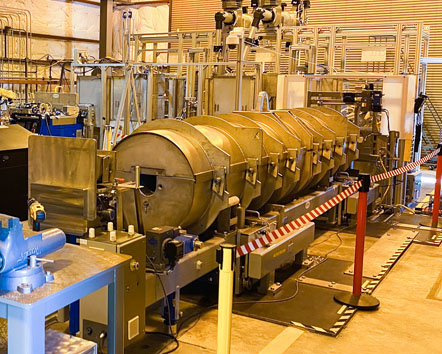
Full size irradiated fuel receipt.
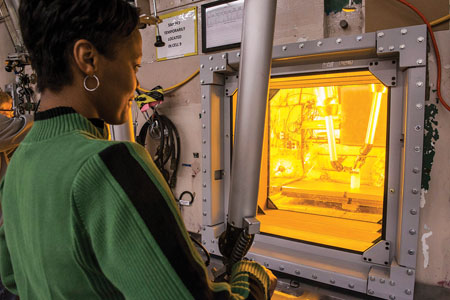
Shielded Cells used for fuel dissolution and first cycle solvent extraction.
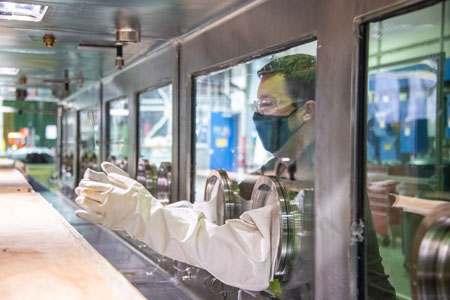
Gloveboxes used for second cycle solvent extraction.
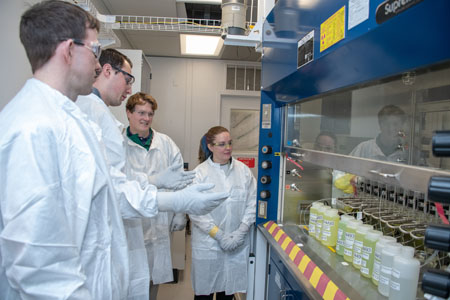
Lab-scale activities used to understand and evaluate processes.
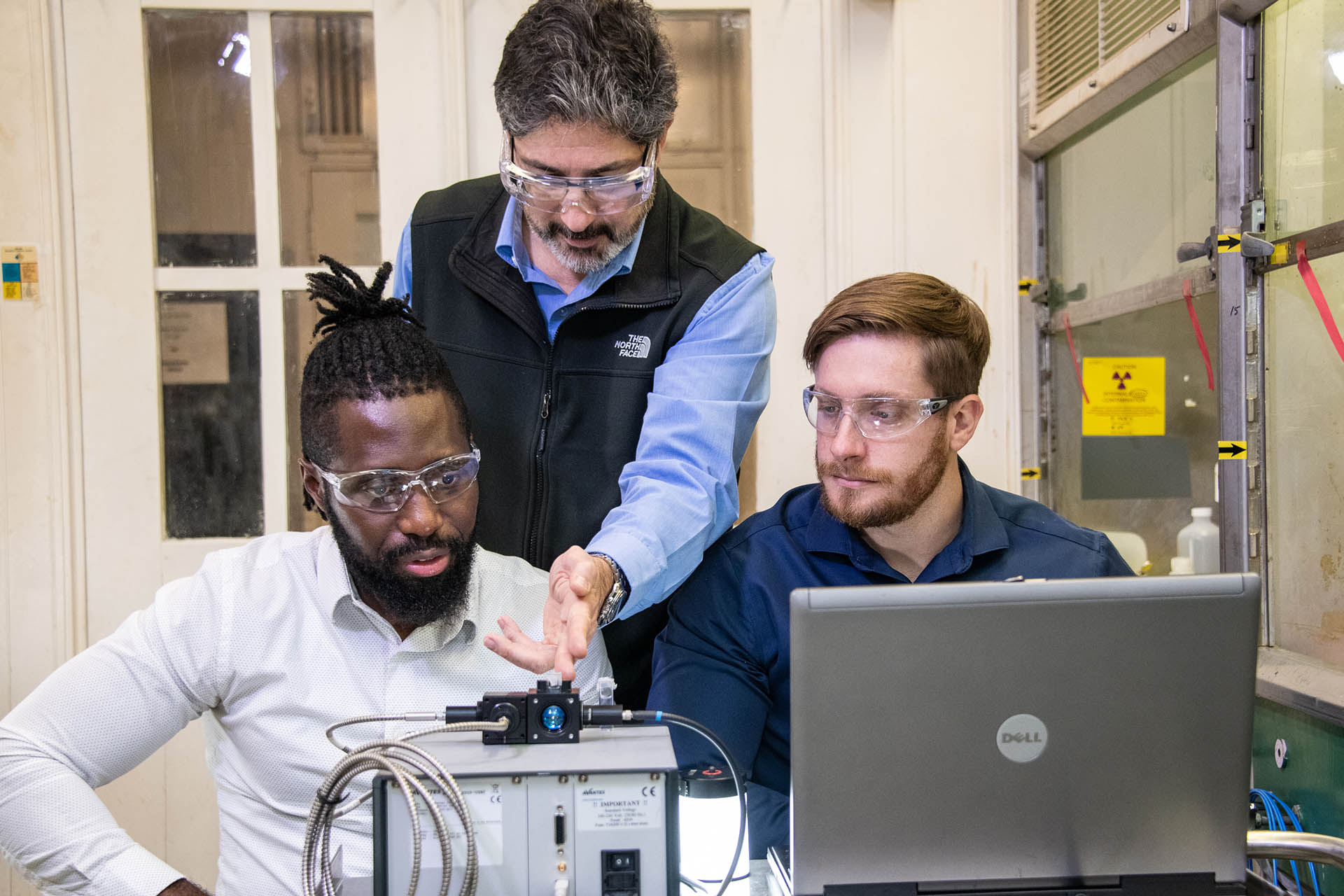
Analytical equipment utilized to provide analysis.

Modeling utilized to further knowledge and to feed back into process knowledge.